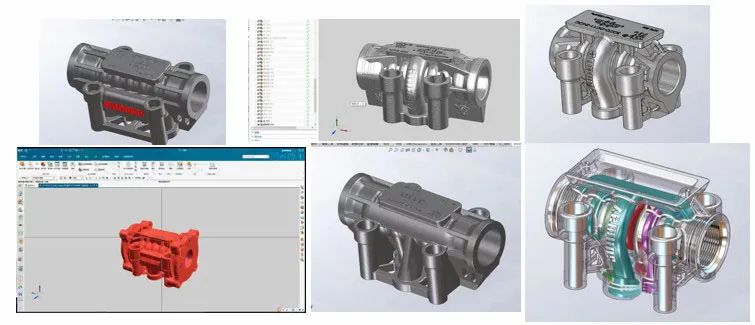10th Apr 2024th
The weekend in Wuhan held a successful conclusion of the industrialization of hydraulic components 3D printing conference, which was hosted by the Shanghai Hydraulic and Pneumatic Tightness Association, Wuhan Yi system and Jiangxi Shangwei contractor. Specific meeting content can be clicked on [Embrace the change] #HiTalks2023 | Intelligent Manufacturing Hydraulic Components 3D Printing Industrialization Seminar held in Wuhan WeChat public number article to view.
Today, we mainly compare what products are available in the field of 3D printing of hydraulic components, both domestic and foreign, and which is stronger and which is weaker, you can discuss in the comment section after reading the article.
1
Do you know what 3D printed hydraulic products are available domestically and abroad?
At present, foreign companies that utilize 3D printing technology to produce hydraulic components, the more famous company should be Aidro. The first domestic crab should be the Jiangxi Shangwei Lu and Wuhan Yi system of the total Cai. (That said, I hometown of Yangcheng Lake hairy crabs have begun to catch, hey National Day back to start eating ......)
Since we mainly want to wave the flag for national brands, here's a one-sentence introduction to these two companies.
Wuhan E-Make Technology - is a company specializing in binder jet 3D printing technology, which can provide a complete set of integrated solutions. And Mr. Lu from Jiangxi Shangwei, based on many years of experience in the production, manufacturing and application of switching valves, proportional valves and servo valves, Mr. Lu believes that additive manufacturing is a way to solve the current hydraulic technology dilemma and to create brand new solutions.
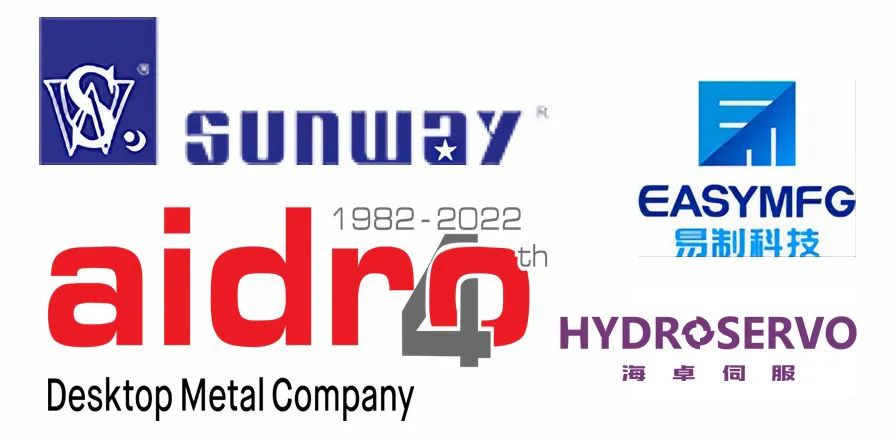
1 Hydraulic valve printed using 316L material
Aidro's HD3-AMES valve with a valve body manufactured using Laser Powder Bed Fusion (LPBF) technology in 316L stainless steel. The additive manufacturing design allowed for an improved internal structure of the valve body, resulting in a better flow path.
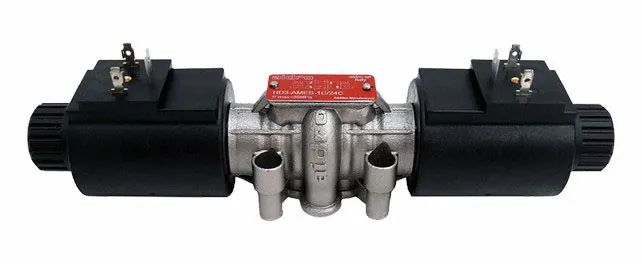
Jiangxi Shangwei Technology Company's 4-way valve, the valve body is manufactured using binder jet 3D printing technology, the material is 316L stainless steel.
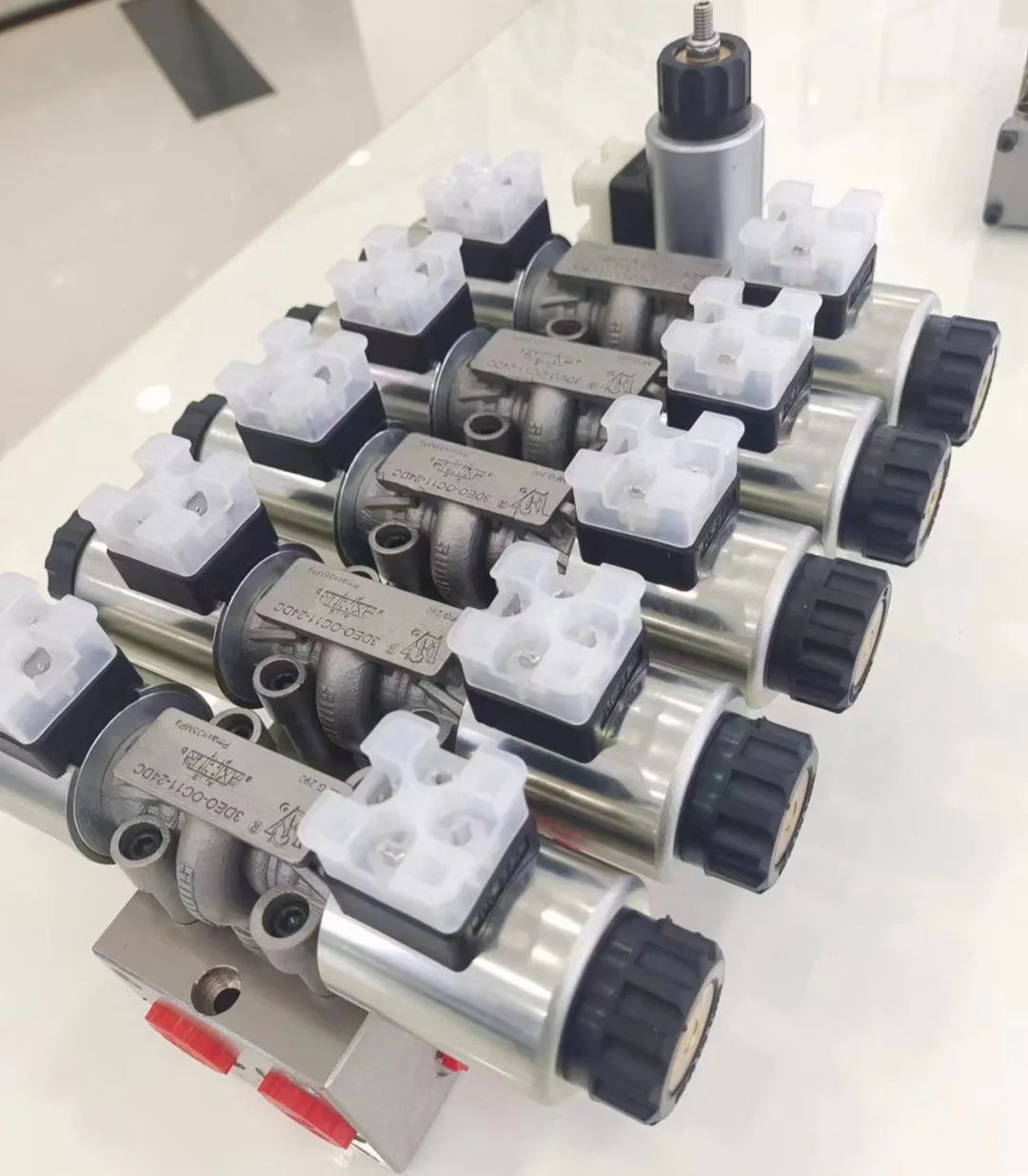
Main Features:
Geometries can be realized that cannot be machined by conventional manufacturing methods
Possibility to improve the flow path in the inner chamber of the valve body
Extremely lightweight design, which of course requires increased stiffness through external reinforcements

2 Integrated Design and Manufacturing of Hydraulic Valves and Valve Blocks
The picture on the left shows Aidro's AMES valve, mounted on top of a valve block that was also manufactured using 3D printing technology.
Compared to the traditional square shaped valve and valve block in the picture on the right, it is extremely advantageous in terms of light weight.

Below is a comparison of Shangwei's traditional and 3D printed valves.

3 Valve block and multi-way valve body design
Through the previous introduction, we have mentioned lightweighting several times, so one of the advantages of valve block design should be in the aspect of weight reduction. Another advantage is that the internal flow channels of the valve block can be optimized through additive manufacturing, resulting in a significant reduction in resistance to flow (i.e., pressure drop), as well as an unprecedented reduction in weight and volume.
Below is a single valve block printed by Aidro, as well as a multi-way valve body.



Below is a demonstration of the internal oil circuit of the valve body by Shangwei and Easy Print.
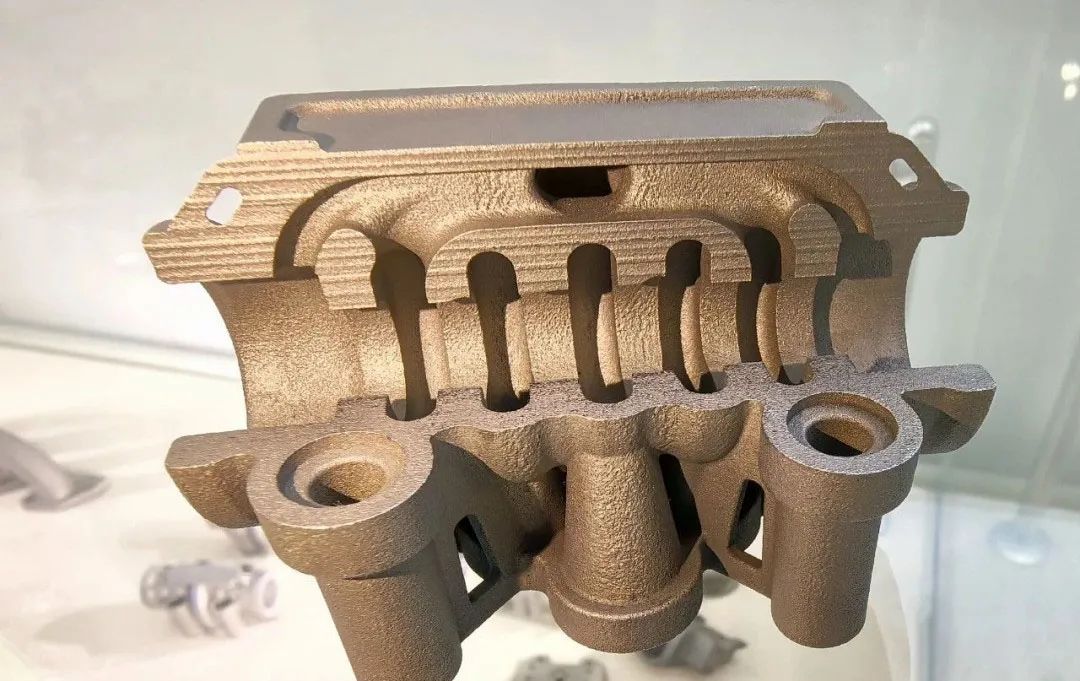
4 3D printed cartridge valve block
This is a hydraulic valve block printed in stainless steel that can be integrated to mount multiple cartridge valves.
Additive manufacturing technology is well suited for designing and manufacturing integrated blocks, where the internal passages of the block are optimized for better flow and significant space savings, and process holes can be eliminated, resulting in a significant reduction in leakage points.
The image below shows a cartridge valve manifold product printed by Aidro.

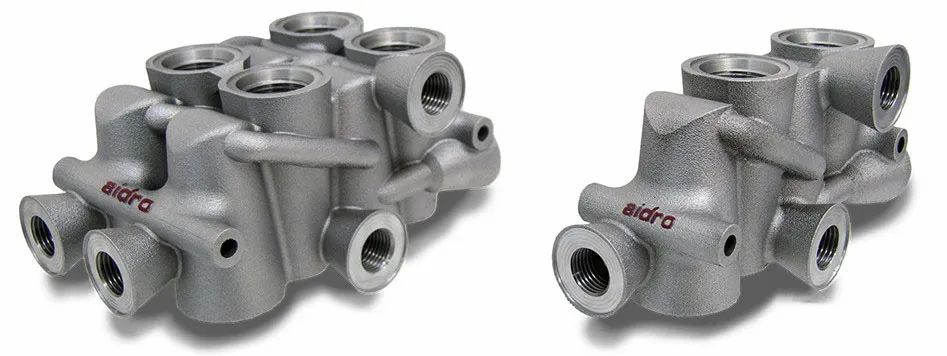
Below is a schematic of a cartridge valve assembled with a 3D-printed valve block as attempted by Jiangxi Shangwei and Wuhan E-Made.
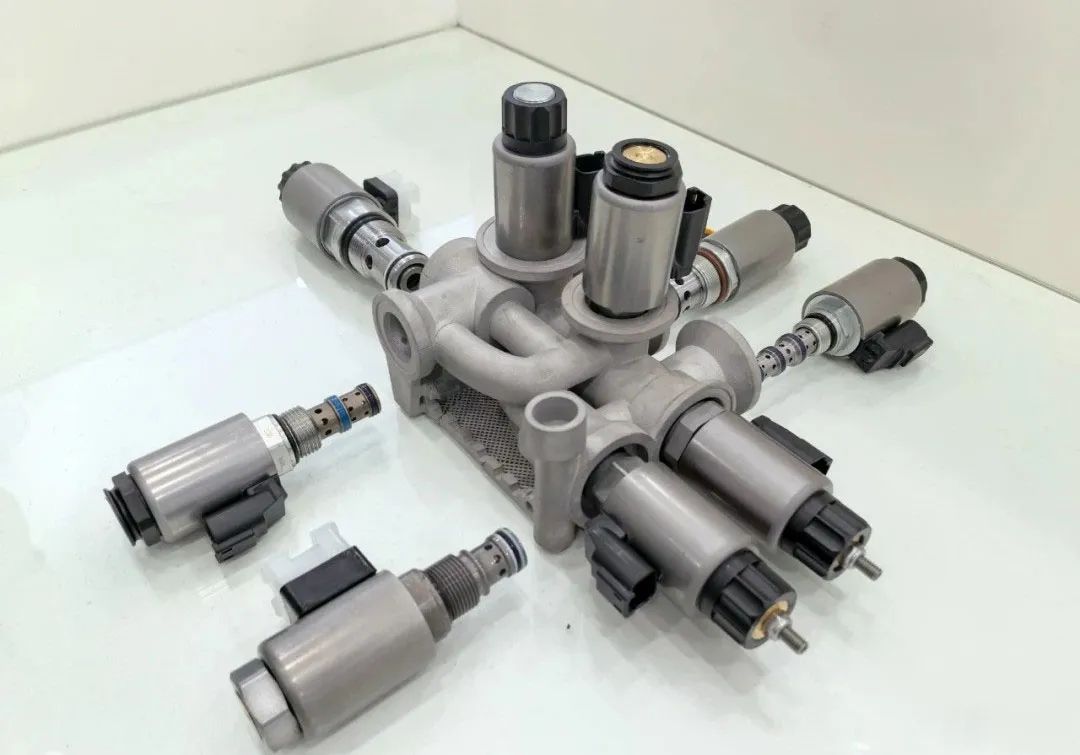
5 3D printed spool
The valve spool has been redesigned to allow elliptical and square holes to be easily realized using 3D printing technology. These shapes are impractical in traditional manufacturing processes, especially CNC machining, and are easily realized using additive manufacturing techniques.
The purpose of changing the shape of the hole is to increase the flow area of the spool, thereby reducing pressure loss.
The image below shows a spool printed by Aidro with an oval hole on the left and a square hole on the right.
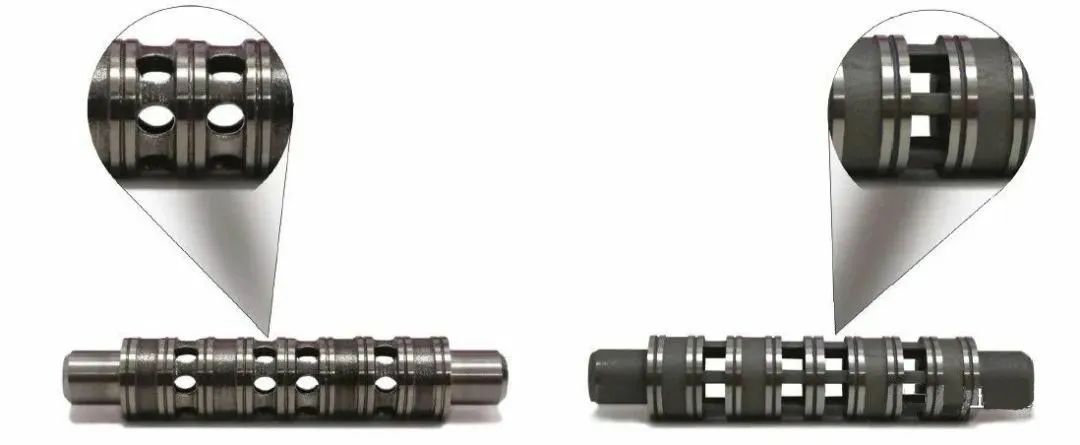
Below is a spool printed by Shangwei (the spool in the picture, which had not been post-processed at the time of the photo).
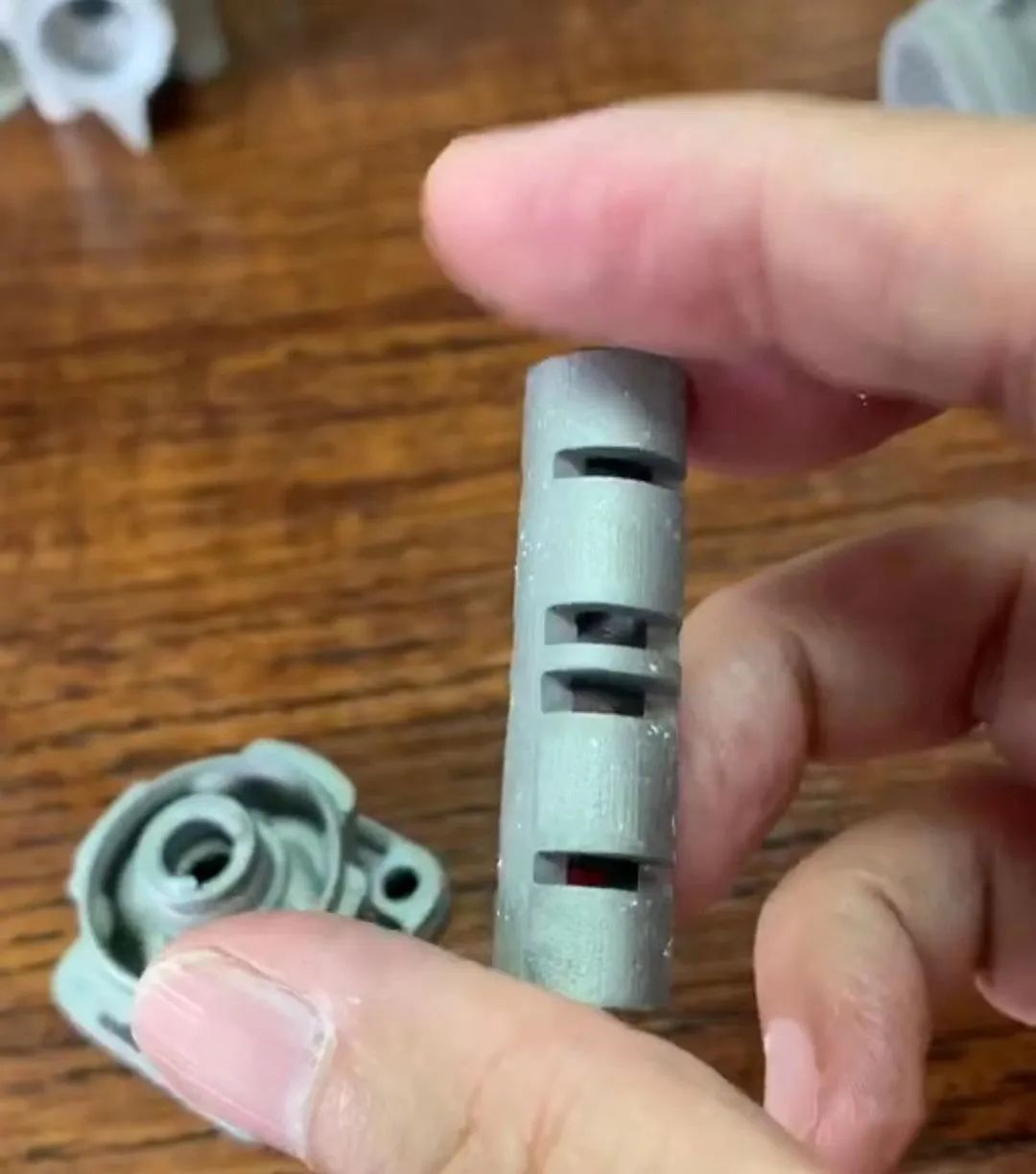
6 Design of high-pressure valve block
When it comes to 3D printing technology, the first question many people have is: is it strong enough and is it pressure resistant? In other words, can it be both lightweight and pressure resistant?
The following figure is a high-pressure valve printed by Aidro, through the lightweight design, the weight of the valve from the original 5kg to 1.3kg, a reduction of 60%; at the same time, the pressure resistance can also reach 700bar, which also indirectly proves that the pressure capacity of the 3D-printed hydraulic components is also completely no problem.
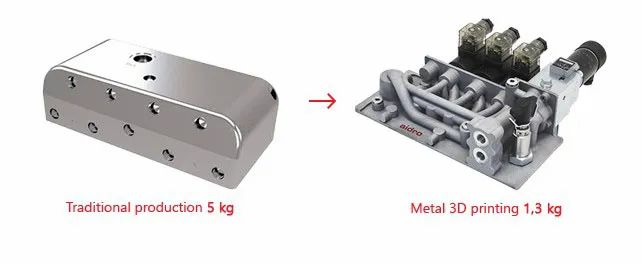
7 3D Printed Counterbalance Valves
Counterbalance valves are typically used for load holding, load control or load safety.
Typically, the setting will be 1.3 times higher than the maximum applied load.
The image below shows a counterbalance valve product manufactured by Aidro using 3D printing technology.

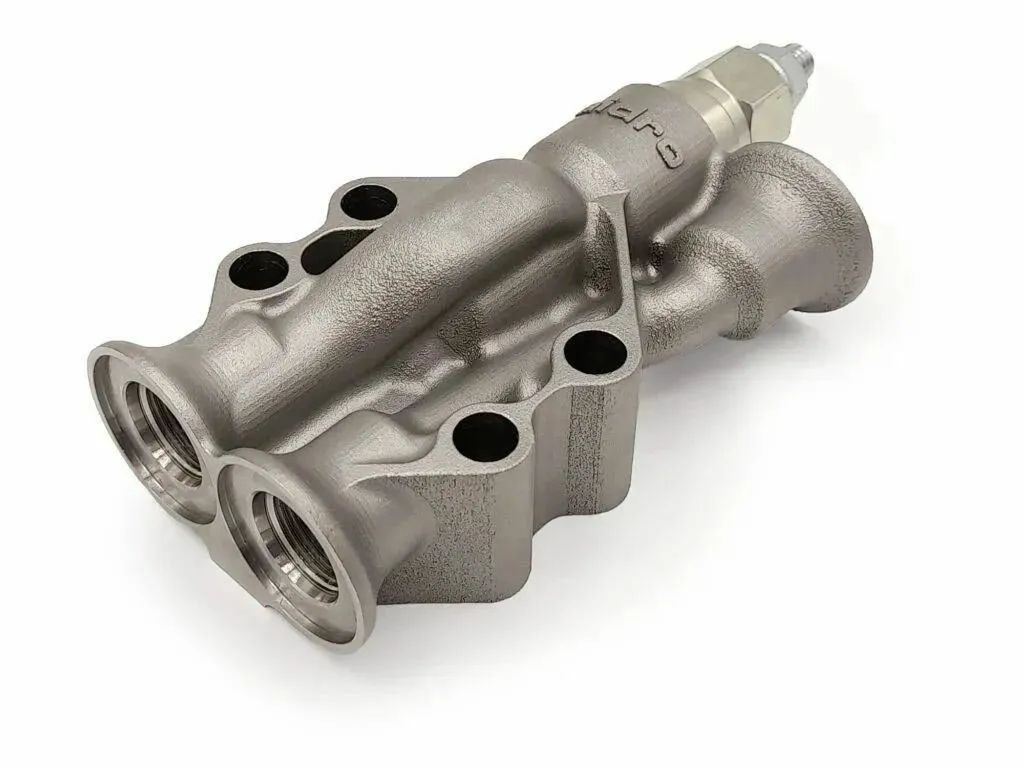
Of course, no domestic company has yet made an attempt at such a product.
8 3D printed servo valve
In this report, Mr. Yan Zhengtao of Hydratron Servo made a theme report of "Application of Additive Manufacturing Technology in the Field of Servo Valves", and also showed the servo valve products made by our own 3D printing technology, as shown in the following figure.

2
What are the advantages of 3D printing hydraulic components?
First of all, we know that with traditional subtractive manufacturing, your design is going to be accommodating to the existing manufacturing process. And 3D printing is additive manufacturing, it will be able to improve this defect of traditional subtractive manufacturing, so that design engineers in the design of the product, more in favor of product performance.
Hydraulic industry and 3D printing industry fully combined, can have the following advantages, you can come together to participate in the analysis, to see whether these advantages, 3D printing hydraulic components really have, or just a gimmick, welcome to leave a message in the comments section!
Can think outside the box, the design does not have to accommodate the manufacturing process, can be more inclined to product performance;
Can provide customized solutions for complex oil channels (structural optimization);
It is possible to achieve better product performance by optimizing the internal oil passages in the valve body (performance optimization, e.g., using fluid simulation);
Lightweighting of hydraulic components can be maximized;
It is possible to try to make the structure more compact by assembling several components such as valve blocks and hydraulic valves into a single unit;
Rapid prototyping and rapid spare part production can be easily realized.
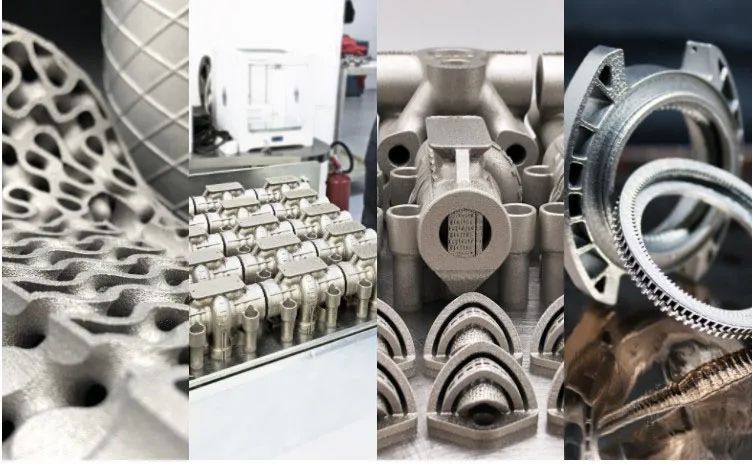
3
What technology will be relied upon to industrialize 3D printed hydraulic components?
For this Wuhan conference, the organizer, Wuhan E-Made, used Binder Jetting (BF) 3D printing technology to print Shangwei's 4-way hydraulic valves. So, what we are going to introduce here is also this Binder Jetting metal 3D printing technology.
It uses an array jet molding method, which is highly efficient and low-cost, and its molding process is as follows:
Using an array nozzle, the three-dimensional CAD model is sliced, and then a series of two-dimensional data is obtained;
According to the two-dimensional graphics obtained from the slicing, selective spray binder in the metal, ceramic powder to solidify the molding;
Multi-layer stacking production to complete the printing of the entire part;
Finally, then through the sintering method to obtain high-precision, high-performance metal, ceramic parts. In order to accelerate the curing speed, heating and other ways to accelerate the curing.
The technology combines the traditional metal injection molding sintering process, effectively solving the two major problems of slow speed and high cost, is a technology solution to meet the requirements of mass production.
Here is a video to understand the molding process of BJ technology.
These products, below, are hydraulic valves printed with BJ technology.
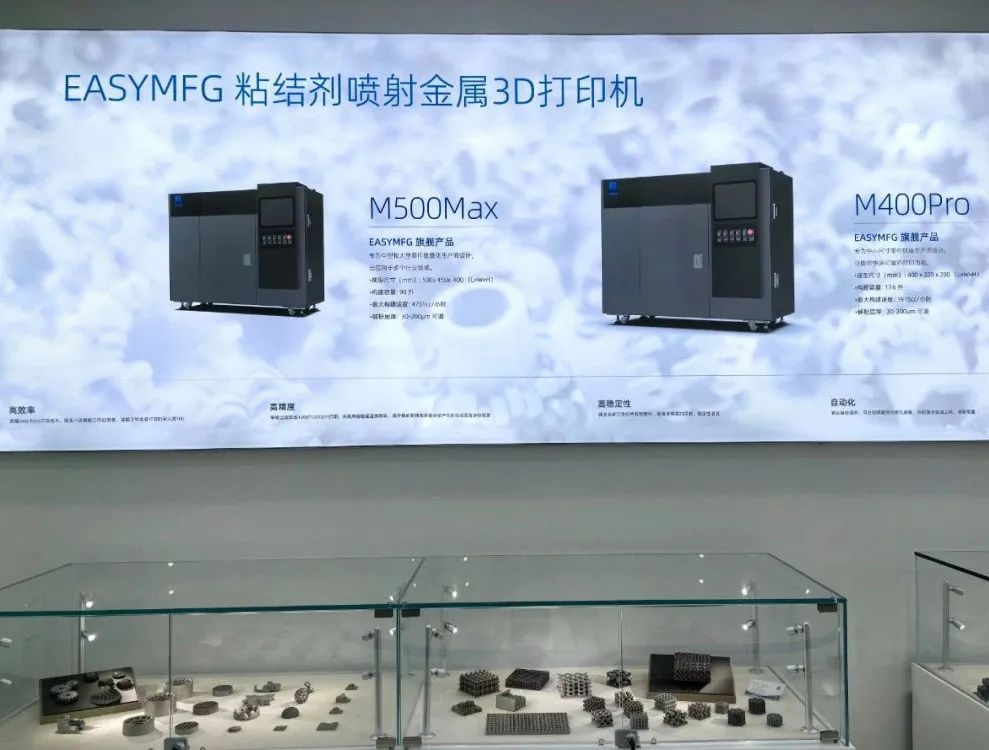
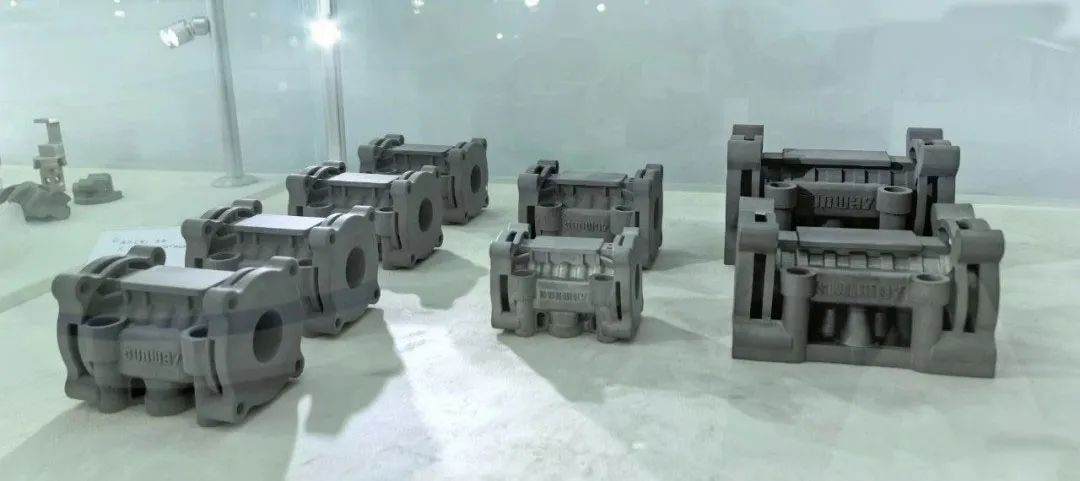
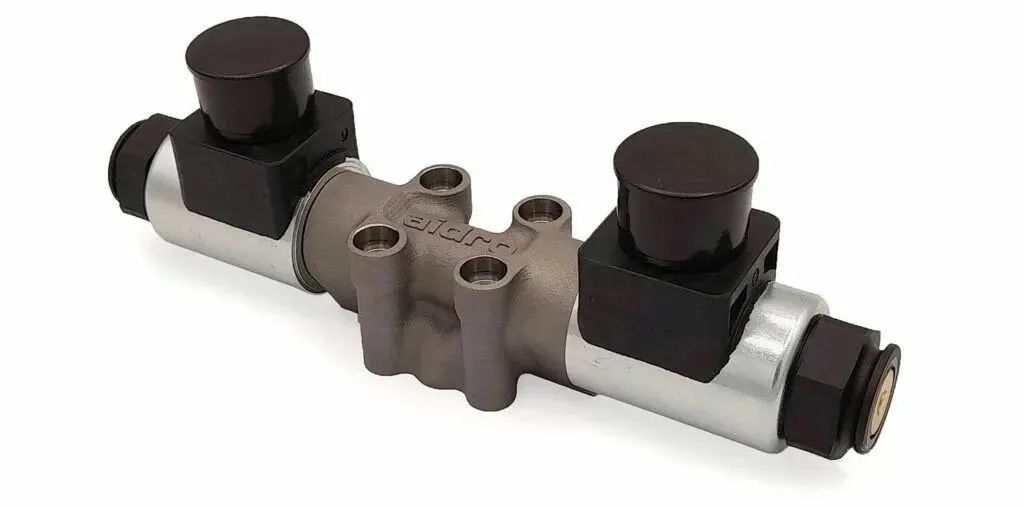
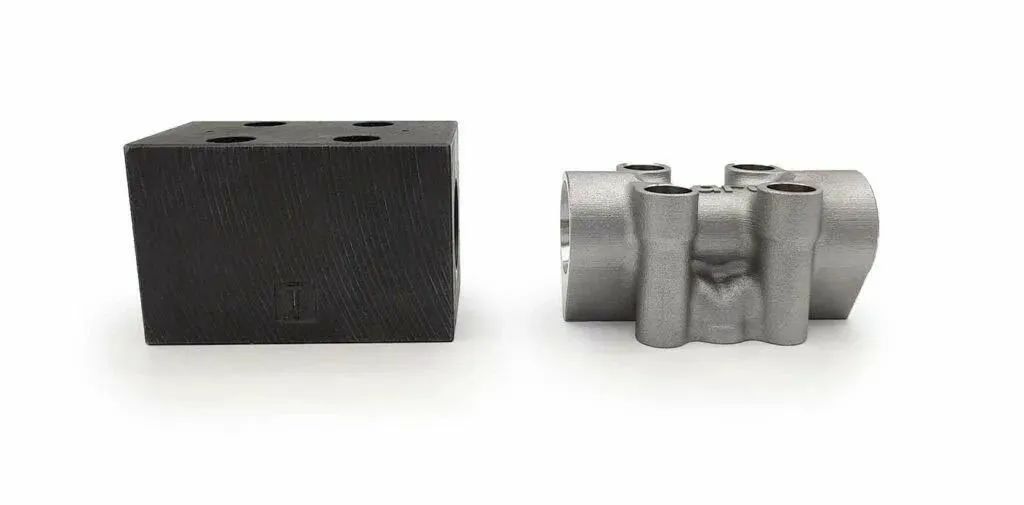
4
Leave two questions for interaction
Finally, leave two simple questions for discussion!
1, we think that the 3D printing of hydraulic components, the larger the product is better to print, or the smaller the product is better to print?
To be more specific, do you think that a 4-pass diameter valve is better to print or a 10-pass diameter valve is better to print?
Everyone can say why in the comment section.
2, have you ever wondered how the 3D printed valve hole is designed?
The picture below, is the business Wei SUNWAY from 2022 to carry out some of the hydraulic components of the 3D design of the display, we can discuss, what good design in line with the design of the 3D printing of the oil circuit method, of course, in the end of my live video also mentioned the relevant methods, interested can look at.
